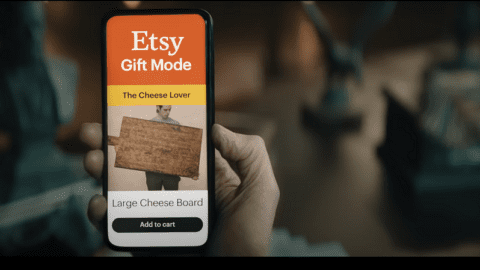It’s becoming ever clearer that customer loyalty involves far more than a dry, rational, dollars-and-cents relationship between a shopper and a brand. A group of experienced retail marketers speaking at the CommerceNext 2019 conference agreed that forging an emotional connection with customers is now an essential element in both attracting and retaining customers.
These marketers’ challenge comes from pinpointing those moments when a customer is primed to “fall in love” with a brand, and also finding ways to encourage the actions that turn occasional shoppers into frequent and valuable customers.
“Most clients [first] come to Sephora for makeup, but once we get them into skin care purchasing, that’s a critical ‘unlock’ that can lead to a lifetime of love,” said Allegra Stanley, VP of Loyalty at Sephora. Stanley was part of a panel discussion, titled Unlocking The Secrets To Loyalty And Retention, that also featured:
Advertisement
• Scott Ableman, SVP Marketing, Americas, GTT;
• Sunil Kaki, SVP Marketing, Thrive Market;
• Liesel Walsh, VP, CRM, Loyalty and Insights, Party City; and
• Lewis Gersh, Founder and Chief Stamp-Licker, PebblePost.
Stanley noted that Sephora uses a combination of mass consumer and exclusive brands as a way to cement customer loyalty. Carrying exclusive brands helps Sephora get customers who are “loyal to both the [product] brand and the Sephora brand,” she said.
Sephora has another advantage in this area: its Beauty Insider loyalty program. Even here, though, there’s a split between transactional or “bought” loyalty and a deeper level of emotional involvement. “I think the real richness comes from emotional or earned loyalty,” said Stanley. “That’s accomplished through the rewards. People come up to me and say they redeemed their points by going to a spa or getting a face chart. That experiential loyalty drives the greatest lifetime loyalty and love.”
Overcoming Divided Loyalties
Determining whether customers are loyal to a product or to the retailer carrying it is critical. Party City’s Walsh, who previously held a senior marketing position at Petco, noted that the retailer carried both national pet food brands as well as others that were hard to find at competitors’ stores.
However, when the products bought didn’t tie the consumer to a particular store, Petco had to analyze consumption patterns to stress additional offerings that increased its “stickiness.” “In this case, it was additional products and services, like pet grooming and training classes,” said Walsh. “These gave Petco another way to be ‘sticky’ on a commodity product purchase.”
Marketers also are becoming more sophisticated at forecasting customer lifetime value by reading emotional cues. PebblePost’s Gersh has worked with a pet care company, and helped the brand discover the “magic question” to ask customers: “Did you choose your pet, or did your pet choose you? If it’s the latter, that person is inspired by their pet and by what they are going to do for them,” said Gersh.
Encouraging Direct And Indirect High-Value Actions
Marketers also are improving their ability to identify, and encourage, customer actions that indicate engagement. Thrive Market operates on a membership model, charging shoppers $60 per year, which requires the retailer to “build loyalty at a high level,” said Kaki. “It’s been a huge shift in our thinking, but we need to drive the high-value actions that lead to the right behavior. That might be consuming content, engaging with the Thrive Market community or showing interest in the brand stories.”
Encouraging high-value actions can produce bottom-line results: “For example, when customers install our app, the push enablement that that allows will double the revenue generated over the course of a year,” said Kaki. “If we can incentivize the app install, that’s an indirect action that leads to higher purchases over time.”
Achieving results like this, however, requires “patience and investing in the right way,” said Kaki. “It’s easy to do promotions and discounts, but it’s much harder to create an experience and highlight your customers, stories and brands as part of your marketing collateral. It requires a shift in mindset and resources, but it creates a value beyond price and convenience.”
Marketers today also are tasked with gaining a deeper understanding of what the brand’s relationship is to their customers. Walsh, who also has served in marketing roles at Restoration Hardware, noted that there are many indicators that may not be immediately obvious.
“You can’t account for the magic,” said Walsh. “Sometimes it’s about how long they stay in the store, or how many times people said ‘love’ about their shopping experience. The Restoration Hardware store on Wilshire Boulevard built a garden area, and people had work coffee dates there. That doesn’t point back to dollars or points that are redeemed,” but it does indicate how these consumers felt about the store’s atmosphere. “You can’t bean count love,” she added.









